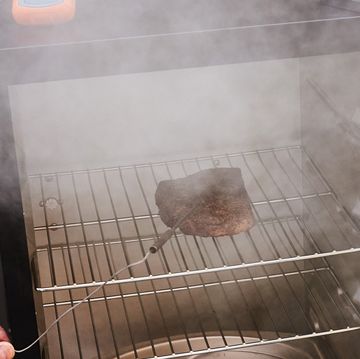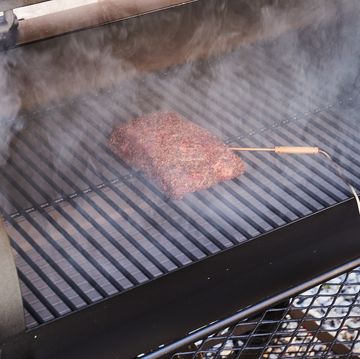The Brewers Association released its mid-year report on the state of craft beer back in June. Craft beer sales have increased by a rate of 17.2% during the first half of 2014 with over 3,000 US breweries now in operation and nearly 2,000 on the way. And yet, a concern for our collective future has accompanied the celebration of our industry's growth. Sam Calagione, founder of Dogfish Head, recently warned that a competitive era for craft beer is dawning. His prediction: "There's a bloodbath coming."
Restaurants, bars, and retailers have aggressively expanded their craft beer offerings, fueling the growth of established and new breweries alike, while encouraging the plans of would-be craft brewers. But for all of craft beer's expansion, concerns abide about just where all of this beer will go, and which brewers will ultimately survive.
Meanwhile, the very tenets that inspired our craft beer movement from the beginning—an insistence on creating the highest quality, most flavorful beer in a wide array of styles—often no longer inform how purveyors choose to buy craft beer or what craft drinkers want to drink. New influences are afoot, and perhaps none is more pervasive or more limiting than the drink-local movement.
RELATED: Believe It or Not, Vodka Used to Taste Like Scotch
Drinking local certainly has its merits, from reducing the carbon footprint associated with lengthy shipping runs to improving the local economy. Beer brewed and served locally tends to ensure a higher degree of freshness. But I have to wonder if, in spite of its merits, the drink-local movement has taken our focus away from the reason we all turned to craft in the first place. We began by decrying the lack of variety, the lack of quality, and the lack of full-flavored drinking experiences offered by the industrial lager. Now, the desire to drink local brews has reached a fever pitch, often blinding publicans and craft beer drinkers alike from what should ultimately guide our choices: Is the beer of the highest quality? Is it bereft of off-flavors? Is it delicious? In short, is it superlative and memorable?
There's no question that an anxiety about the current quality and flavor character of craft beer has taken root. During this year's Craft Brewers Conference in Denver, Paul Gatza, Director of the Brewers Association, noted that, "While the top end of quality continues to improve, there are some cracks with the new brewers."
This came after Gatza mentioned that seven or eight of the ten or so new breweries he encountered at a recent beer festival needed improvement, even though the brewers themselves believed their beers to be beyond reproach, even "awesome." I worry that some of these new brewers are capitalizing on the popularity of local beer, finding willing buyers based on the proximity of the brewing, rather than the merit of the beer itself.
All too often, when locally brewed beer gains prominence, a uniformity of offerings ensues. Bars, restaurants, and retail shops begin to showcase a similar roster of breweries and flavor profiles. These lists are often hop-heavy based on the standard session IPA, pale ale, IPA, and Imperial IPA.
Consumers who value local brews above quality and variety often don't realize that the local beer movement has erroneously capitalized on some of the language and ethos of the local food movement. Though local beer is shipped shorter distances, the ingredients utilized to brew the beer are rarely sourced locally. Then there is the notion of freshness. Since beer is always crafted to guarantee some semblance of stability, whether aggressively hopped and boiled to fend off infections, or filtered, or bottle-conditioned, or even pasteurized, it's far less perishable than locally grown food. So as far as flavor degradation goes, beer will always have a rather long shelf life—ninety days from the packaging date is the industry standard for beers that require the freshest serving situations.
RELATED: The New Invention That Could Literally Remove the Shit from Your Whiskey
With few exceptions, I rely on fresh, local, or domestically brewed craft when I'm in a mood for hoppy ales, but I pursue a boundless array of well-traveled styles from overseas, refusing to forsake the excellence of Belgian sours, saisons, and strong ales, Scandinavian stouts, and malt-forward German lagers. Though American craft beer culture is more diverse than ever before, there are traditions and flavors beyond our borders that cannot be ignored. With a wider purview, we can source and sip a balanced array of flavors showcased from the best of our local producers but also from the finest of the domestic and international scene.
Delicious, complex, and high quality craft-brewed ales and lagers abound in 2014. They are made down the street, in neighboring states, on opposite coasts, and further abroad. As we situate our draft lists, type up our bottle menus, arrange our retail shelves, and stock our fridges, we need to constantly remind ourselves of how this whole movement began and maintain a steadfast appreciation of quality and variety in beer.
If the "bloodbath" is indeed coming, let's hope that the fallout leaves us with a balanced ensemble of local, domestic, and international brews covering the entire panoply of styles, all of the highest order.
Bio: As Beer Director for the D.C. and Virginia based Neighborhood Restaurant Group, Greg Engert sources beers for the company's nineteen concepts including Birch and Barley, ChurchKey, and Iron Gate. In 2013, Engert and the Neighborhood Restaurant Group, opened the boutique brewery Bluejacket in a historic boilermaker factory in Washington D.C.'s Navy Yard. Since opening, Bluejacket has produced 80 unique brews.
Originally published at Esquire.













